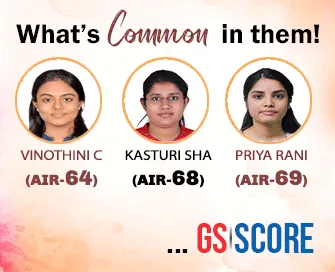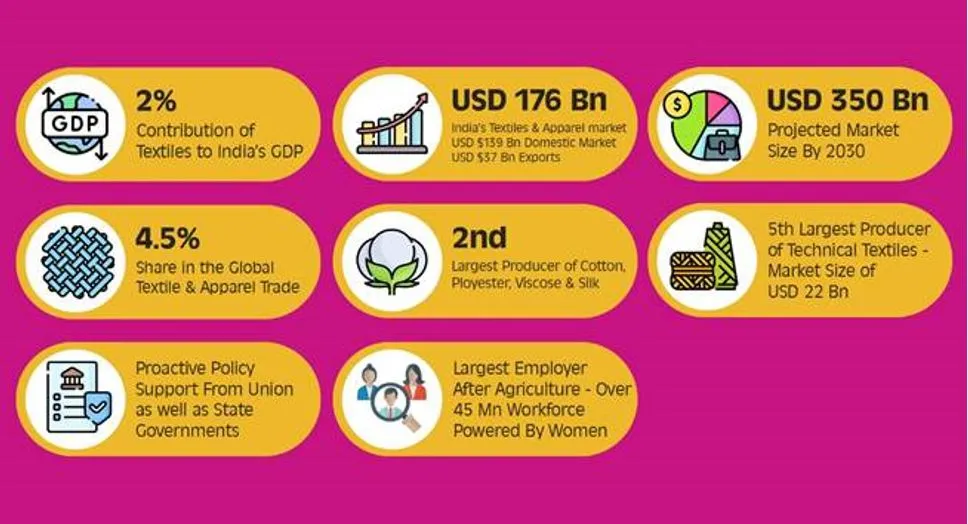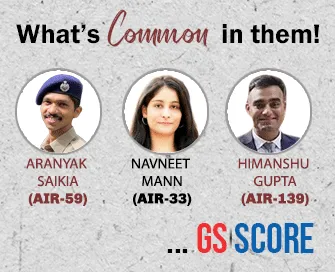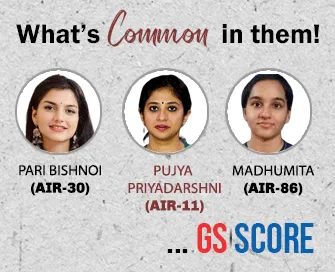

25th February 2025 (13 Topics)
Mains Issues
Context
India, in 2024, witnessed 84 internet shutdowns, making it the second-highest country globally for such disruptions. According to reports, India accounted for 58% of all documented internet shutdowns in the first half of 2023. Internet shutdowns have profound effects on citizens, businesses, and governance. Here’s a detailed breakdown of the provisions governing internet shutdowns, their impacts, arguments for and against them, and possible solutions to minimize their use.
Legal Provisions Governing Internet Shutdowns
- Indian Telegraph Act, 1885 & Suspension Rules (2017):
- Section 5(2) of the Indian Telegraph Act empowers the Union or State Home Secretary to order the suspension of telegraph services, including the internet, during a public emergency or when public safety is threatened.
- Temporary Suspension of Telecom Services Rules, 2017 stipulate that such an order must be reviewed by a committee within five days, and cannot last longer than 15 days. In urgent situations, a joint secretary-level officer or above can issue the order without prior committee review.
- Code of Criminal Procedure (CrPC) - Section 144:
- Section 144 allows district magistrates or any empowered executive magistrates to issue orders to prevent public disturbances. Internet suspension can be part of such orders for maintaining public order.
Impacts of Internet Shutdowns
- Violation of Fundamental Rights:
- Freedom of Speech and Expression (Article 19(1)(a)): The Supreme Court in the Anuradha Bhasin vs. Union of India (2020) case highlighted that internet shutdowns violate the freedom of speech and expression.
- Right to Practice Profession (Article 19(1)(g)): It also impacts the right to practice any profession, particularly those relying on the internet.
- Right to Information (Article 19): The Raj Narain vs. State of UP (1975) case declared the right to information as fundamental. Internet shutdowns hinder access to critical information.
- Right to Internet (Article 21): The Kerala High Court, in Faheema Shirin v. State of Kerala, declared access to the internet as a fundamental right, further undermined by shutdowns.
- Economic Consequences: Shutdowns cause significant economic disruptions. In the first half of 2023, India lost Rs 2,091 crore (USD 255.2 million) due to internet shutdowns.
- Disruption of Education: Schools, colleges, and universities increasingly rely on online platforms for teaching and exams. Shutdowns prevent students from accessing educational content and resources, affecting their studies.
- Health Sector Impact: Shutdowns affect the ability to coordinate medical services, access urgent healthcare information, and maintain mental health services. Studies have shown that such disruptions exacerbate public health challenges.
- Impeding Disaster Response: Internet shutdowns complicate the communication required for disaster management, hampering the flow of vital information during crises and reducing the effectiveness of humanitarian aid.
- Erosion of Trust: Frequent shutdowns can diminish public trust in the government and its institutions. There are concerns about increasing censorship and control over information flow, which reduces transparency and accountability.
Arguments For and Against Internet Shutdowns
Arguments in Favor |
Arguments Against |
|
|


Mains Issues
Context
According to the World Social Protection Report 2024-26, the Director-General of the International Labour Organization highlighted that India’s social protection coverage has nearly doubled, with the proportion of the population covered increasing from 24% to 49% in a short period.
What is Social Security?
- Social security refers to a system designed to provide financial support and protection to individuals, particularly during times of need, such as retirement, unemployment, illness, or disability.
- It aims to ensure that people have access to essential services and resources that promote their well-being.
- Generally, India’s social security schemes cover the following types of social insurances:
- Pension
- Health Insurance and Medical Benefit
- Disability Benefit
- Maternity Benefit
- Gratuity
India’s Efforts to Expand Social Security Coverage
- The proportion of India’s population covered under at least one branch of social protection has increased dramatically, from 24% to 49%, nearly doubling in a short period.
- This improvement is largely attributed to government efforts to expand and modernize the social protection system.
- Key Achievements in Social Protection
- Doubling of Coverage: India’s efforts to expand social protection have led to a significant increase in coverage. As mentioned earlier, the proportion of the population covered under social protection has doubled, from 24% to 49%. This achievement is seen as a model for other nations looking to improve their social security systems.
- Reduction in Unemployment: India’s unemployment rate has decreased significantly, from 6% in 2017-18 to 2% in 2023-24. This reduction reflects the success of various policies aimed at creating jobs, promoting inclusive economic growth, and improving the overall labour market.
- Improved Social Security for Informal Workers: The government has taken steps to extend social security coverage to informal workers, including those in agriculture, construction, and gig economies. This has been crucial in ensuring that a larger portion of the workforce has access to benefits like healthcare, pensions, and insurance.
Key Initiatives to Enhance Social Protection
Global Coalition for Social Justice
|


Mains Issues
Context
The University Grants Commission (UGC) has decided to discontinue the UGC Consortium for Academic and Research Ethics (UGC-CARE) list. The list will now be replaced by a set of suggestive parameters for choosing academic journals.
About UGC-CARE List
- UGC Consortium for Academic and Research Ethics (UGC-CARE) list was introduced in 2018 to list reputable academic journals.
- UGC-CARE was designed to ensure that only reputable journals were considered for faculty selection, promotions, and research funding applications.
- Criticism: The list faced criticism for various reasons:
- Over-centralization: Academics complained that the UGC was making the final decision on what constituted high-quality research and journals, which led to delays in updating the list.
- Lack of Representation: Journals in certain academic fields, especially in regional languages (like Tamil), were not included, limiting academic growth in those areas.
- Transparency Issues: There were concerns that the decision-making process behind the list lacked transparency.
The New Suggestive Parameters
- In place of the UGC-CARE list, the UGC has issued a draft notification titled "Suggestive Parameters for Peer-Reviewed Journals." These parameters aim to guide authors in evaluating journals. Some of the key criteria include:
- Preliminary Criteria: Title of the journal; International Standard Serial Number (ISSN); Periodicity and continuity; Transparent review policy
- Editorial Board Criteria: Details about the journal's editorial board, including its composition.
- Other Key Criteria:
- Editorial policy: The journal's approach to content review.
- Standards: How the journal adheres to academic and ethical standards.
- Visibility: How widely the journal is circulated and accessed.
- Research ethics: The integrity of the publication process.
- These criteria are meant to help authors identify credible journals before submitting their articles for publication.
Rationale Behind the Change
- Decentralize the process: Higher education institutions (HEIs) will now have the responsibility to evaluate journals. This gives them the flexibility to create their own mechanisms for assessing journal quality based on their specific needs and academic norms.
- Combat Predatory Journals: The new system is designed to tackle fake or unethical journals by encouraging institutions to develop their own evaluation standards.
- Encourage Diversity: The decentralization allows institutions to adapt the evaluation process to suit newer or niche disciplines that may not fit into a one-size-fits-all list.
Concerns Raised
- Risk of Low-Quality Journals: Critics worry that without a central list like UGC-CARE, low-quality or "predatory" journals may proliferate.
- Lack of Oversight: The SFI has expressed concerns that decentralizing the process could lead to inconsistent journal evaluation practices across institutions, resulting in arbitrary decisions.
- Deregulation: The move is also seen as part of a larger trend of deregulation in higher education under the National Education Policy (NEP) 2020, which critics argue could undermine academic integrity.


Mains Issues
Context
India is increasingly focusing on reducing its reliance on imported fertilisers such as urea, di-ammonium phosphate (DAP), and muriate of potash (MOP). This shift is crucial for the country’s agricultural strategy and economic efficiency, especially given that these fertilisers are heavily imported, making India vulnerable to fluctuations in global prices and currency depreciation.
What is the current state of India’s fertilizer sector?
- Globally, India is the second largest producer and consumer of fertilizers only after China.
- Major Fertilizers Produced: The main fertilizers produced in India include urea, DAP (diammonium phosphate), NP (nitrogen-phosphorus), NPK (nitrogen-phosphorus-potassium) complex fertilizers, ammonium sulphate, potash, and single super phosphate (SSP).
- Import Dependency: India heavily relies on imports for key raw materials for fertilizer production:
- Potash: Entirely imported, with no domestic sources.
- Phosphates: Phosphate rock and phosphoric acid are imported.
- Urea: 30% of India’s urea requirement is met by imports.
- MOP: MOP is entirely imported from countries like Canada, Russia, Jordan, and Israel because India lacks potash reserves.
- DAP: Both the finished product and its raw materials (like rock phosphate and sulphur) are imported, mostly from countries such as Saudi Arabia, China, Russia, and Morocco.
- Fertilizer Subsidy: The government provides subsidies to ensure affordable prices for fertilizers:
- Urea is sold at a subsidized price under the Retention Pricing Scheme (RPS).
- Phosphate, complex, and potassic fertilizers are under the Nutrient Based Subsidy (NBS) scheme.
The Shift:
- Now, India is focusing to promote balanced fertilisation, where fertiliser use is tailored to the specific nutrient needs of crops. This will help in reducing dependency on imported fertilisers while improving the efficiency of nutrient use in agriculture.
- Ammonium Phosphate Sulphate (APS) is emerging as an effective substitute for DAP. APS, with a formula of 20:20:0:13 (20% nitrogen, 20% phosphorous, 13% sulphur), provides balanced nutrition for a variety of crops like oilseeds, pulses, and maize.
- This complex fertiliser helps farmers avoid using DAP, which has a very high phosphorous content but lacks sulphur and nitrogen.
- Why APS is Better:
- APS is cheaper to produce than DAP.
- It requires less phosphoric acid and uses sulphuric acid to make the fertiliser, which is a cheaper source of sulphur.
- By using APS, fertiliser companies can sell it at a lower price while reducing waste.
Why the Shift Is Necessary?
- Import Dependence: India is highly dependent on imports.
- High Analysis Fertilisers: Urea, DAP, and MOP are all high-analysis fertilisers, meaning they contain very high amounts of individual nutrients (like 46% nitrogen in urea and 60% potash in MOP).
- While these nutrients are essential, most crops require a balanced mix of nutrients, including secondary nutrients (such as sulphur, calcium, and magnesium) and micronutrients (like zinc, iron, and boron).
- The overuse of high-analysis fertilisers leads to inefficient nutrient absorption, harming both the environment and farmers' costs.
- Economic Impact: Importing these high-analysis fertilisers is expensive, and the depreciation of the Indian Rupee makes imports even more costly. This puts a strain on India's foreign exchange reserves and increases the subsidy burden for the government.
Government’s Role:
- The government is working to cap the consumption of high-analysis fertilisers like urea, DAP, and MOP.
- Encouraging farmers to use fertilisers with the correct nutrient mix is crucial for improving nutrient use efficiency and maximising foreign exchange savings.
- For example, NPKS (Nitrogen, Phosphorous, Potassium, and Sulphur) complex fertilisers, such as 10:26:26:0, 12:32:16:0, and 15:15:15:0, are designed to meet the complete nutritional needs of crops.
Fact Box:About Fertilisers
|


Mains Issues
Context
Despite its large size, India’s textile industry has struggled with slow growth in recent years.
Current state of India’s textile industry
- India is the sixth-largest exporter of textiles globally, contributing 21% to the country's total exports in 2023-24. The sector holds a 4.5% share in global trade, with the United States and European Union accounting for47% of India's textile and apparel exports.
- It employs over 4.5 crore people, with a significant portion of the industry focused on small and medium enterprises (MSMEs) across specialized hubs like Bhiwandi (Maharashtra), Tiruppur (Tamil Nadu), and Surat (Gujarat).
- Cotton Production: India is the second-largest cotton producer globally, contributing to 24% of the world’s cotton output. Cotton cultivation employs about 60 lakh farmers, especially in Gujarat, Maharashtra, and Telangana.
- Man-Made Fibres (MMF): India is the second-largest producer of synthetic fibres, with Reliance Industries and Grasim Industries leading production. However, MMF consumption per capita in India is low compared to countries like China and the U.S.
- Growth and Exports:
- India’s textile and apparel industry contributes 13% to industrial production, 12% to exports, and 2% to GDP.
- Exports were stagnant, reaching $34.1 billion in FY24, only slightly higher than $33.4 billion in FY20.
- India’s exports face tough competition from countries like China, Vietnam, and Bangladesh, which benefit from lower production costs, vertically integrated supply chains, and simpler regulations.

Challenges:
- Production Costs: High production costs, particularly in cotton and MMF, reduce India’s export competitiveness. Raw materials like polyester and viscose fibres are more expensive in India compared to China.
- Fragmented Supply Chain: India’s cotton supply chain is fragmented, leading to higher logistical costs and inefficiencies.
- Complex Regulations: India’s textile exporters face complicated customs procedures, unlike competitors in countries with free trade agreements and simpler regulations.
Sustainability Concerns:
- Global demand for sustainability is rising, and the textile industry must comply with stricter environmental standards. The EU’s new regulations on sustainability pose challenges, especially for small enterprises.
- India is looking at a growing textile recycling market, but the shift to sustainable production methods is costly and challenging for smaller firms.
- Fashion waste is a global issue, and India, like others, needs to address textile waste recycling to meet future sustainability goals.
Government/Policies for Textile Sector
|


Mains Issues
Context
The Supreme Court of India highlighted the crucial importance of proper garbage segregation at the household level for the well-being of the environment. The court emphasized that this practice is vital for effective waste management, especially as cities, particularly in the National Capital Region (NCR), grapple with increasing waste production.
What is Segregation of Waste?
- Waste segregation refers to the process of separating different types of waste materials at the source (usually at homes, offices, or industries) to make waste management more efficient.
- Proper segregation is essential for recycling, reusing, or disposing of waste responsibly.
- It ensures that recyclable materials, organic waste, and non-recyclable materials are separated, which not only helps in reducing the amount of waste sent to landfills but also supports environmental sustainability.
- Types of Waste:
- Biodegradable Waste: This is organic waste that can be broken down by natural processes. Examples include food scraps, garden waste, and other organic materials.
- Non-Biodegradable Waste: Waste that cannot naturally decompose. Examples include plastics, glass, metal, and certain chemicals.
- Recyclable Waste: Materials that can be reused or recycled to make new products. Common recyclables include paper, cardboard, glass bottles, plastic bottles, and metals like aluminum.
- Hazardous Waste: This includes any materials that are toxic or dangerous to human health or the environment. Examples are batteries, electronic waste, and certain chemicals.
- Construction and Demolition Waste: This includes debris from construction activities, such as concrete, bricks, tiles, and metal.
- E-waste: Electronic waste such as old computers, mobile phones, and electrical appliances.
Importance of Waste Segregation:
- Recycling Efficiency: Proper segregation ensures that recyclable materials are not contaminated with non-recyclables, making the recycling process more efficient.
- Environmental Protection: Segregating waste helps reduce pollution, conserve natural resources, and minimize the need for landfills.
- Reduction in Landfill Waste: By separating out recyclables and organic waste, less waste ends up in landfills, which reduces environmental damage and greenhouse gas emissions.
- Energy Recovery: Segregation allows waste-to-energy projects to run efficiently by processing organic waste into energy.
Methods of Waste Segregation:
- At the Source (Primary Segregation):
- Household Segregation: Waste is separated at the household level into different bins or containers based on the type of waste. For example:
- Green Bin: For biodegradable waste (organic waste such as food scraps, garden waste).
- Blue Bin: For recyclables (plastic, paper, metal).
- Red Bin: For non-recyclable waste (such as plastic bags, broken items).
- Yellow Bin: For hazardous waste (e-waste, batteries).
- Businesses and Industries: Larger institutions or industries also segregate waste at the source. They usually have separate bins for recyclables, organic waste, and non-recyclable waste, following similar principles to households but on a larger scale.
- Household Segregation: Waste is separated at the household level into different bins or containers based on the type of waste. For example:
- Secondary Segregation (Post-Collection): This occurs after waste is collected from households and businesses. Waste management companies or recycling centers further sort the waste if primary segregation was not done properly.
- Manual Sorting: Waste is sorted manually by workers into categories like plastics, metals, glass, paper, etc.
- Mechanical Sorting: Machines and automated systems are used to sort waste, especially in large waste management plants. These systems may use technology like air classification, magnetic separation, or vibrating screens to separate different materials.
- Composting of Organic Waste: Biodegradable waste, such as food scraps and garden waste, can be composted to create nutrient-rich soil. This process involves breaking down organic materials using microbes under controlled conditions.
- Waste-to-Energy Conversion: In some cases, waste that cannot be recycled or composted is converted into energy. Organic waste can be used in anaerobic digesters to produce biogas, while other types of waste can be incinerated to generate electricity.
- Recycling Processes:
- Mechanical Recycling: Materials like paper, glass, and plastic are processed in facilities that clean, break down, and remanufacture the waste into new products.
- Chemical Recycling: Involves breaking down polymers in plastic waste into their chemical components to create new plastics.
PYQQ. As per the Solid Waste Management Rules, 2016 in India, which one of the following statements is correct? (2019)
Solution: (c) Q. What are the impediments in disposing of the huge quantities of discarded solid waste which are continuously being generated? How do we safely remove the toxic wastes that have been accumulating in our habitable environment? (2018) |


Mains Issues
Context
A two-and-a-half-year-old girl has shown no signs of a genetic disorder — known as spinal muscular atrophy (SMA) — becoming the first person in the world to be treated for the disease while in the womb.
What is Spinal Muscular Atrophy (SMA)?
- Spinal Muscular Atrophy (SMA) is a severe genetic disorder that causes the progressive weakening of muscles due to the degeneration of motor neurons, which are responsible for controlling movement.
- This condition is caused by mutations in the SMN1 gene, leading to a deficiency of survival motor neuron (SMN) protein, which is essential for the health and function of motor neurons.
- As a result, individuals with SMA experience muscle wasting, difficulty in movement, and in severe cases, respiratory failure.
- SMA is the leading genetic cause of death in infants and children, with SMA type 1 being the most severe form, where symptoms start in infancy and can lead to death by the age of 2-3 years.
- It affects about 1 in 10,000 births.
How Was SMA Treated While in the Womb?
- For the first time, SMA has been treated in utero — during pregnancy — in an innovative trial. The treatment involved administering a drug called Risdiplam, which targets the root cause of SMA by increasing the production of the SMN protein.
- Risdiplam is typically given to patients after birth, and it is most effective when started early.
- In this case, the drug was administered to the mother at 32 weeks of pregnancy. The mother took the drug daily for six weeks, and soon after birth, the baby began taking the drug as well.
- As a result of the treatment, the baby showed higher levels of the SMN protein compared to typical SMA-1 patients. The girl displayed normal muscle development and had no sign of muscle atrophy at 30 months, a remarkable improvement.
Genetic Disorders
|
PYQQ. In the context of hereditary diseases, consider the following statements: (2021)
Which of the statements given above is/are correct?
Solution: (c) |


Mains Issues
Context
The proposal for testing quantum gravity recently made headlines because of its potential to bridge the gap between two fundamental theories of physics: quantum mechanics and general relativity. A recent experiment to test quantum gravity proposes a way to measure whether gravity, a force that is typically explained by general relativity, behaves according to the rules of quantum mechanics.
Why is this significant?
- Quantum mechanics and general relativity have both been extremely successful in explaining different aspects of nature, but they don’t fit together in a way that explains everything in the universe.
- General relativity explains the force of gravity at large scales (e.g., planets, stars, and black holes).
- Quantum mechanics explains the behavior of particles at microscopic scales and includes phenomena like superposition and entanglement.
- However, these two theories are not easily compatible, and scientists have long been searching for a unified theory that can explain both gravity and quantum phenomena. This search has led to various proposals, including string theory and loop quantum gravity.
The Challenge of Quantum Gravity
- Quantum gravity refers to the hypothetical idea of unifying these two theories into a single framework that can explain both the microscopic and macroscopic worlds.
- The central problem is that gravity has never been successfully incorporated into quantum mechanics.
- While quantum mechanics works well for the other three forces (electromagnetic, strong nuclear, and weak nuclear forces), gravity has resisted quantization.
- In the search for quantum gravity, scientists have been proposing experiments to test the quantum nature of gravity.
- Quantum Nature of Gravity: Quantum mechanics is known for strange phenomena like:
- Superposition (a system can exist in multiple states at once, like Schrödinger's cat being both alive and dead).
- Entanglement (two particles can instantly affect each other, even if they are far apart).
- Classical systems (e.g., planets and cars) do not behave in this way, but quantum systems do. The key difference is that measurement in quantum mechanics forces a system into a definite state, while classical systems do not change when measured.
What is the new proposed method?
- The new proposal for testing quantum gravity focuses on weak gravity, unlike previous efforts that have focused on strong gravity (near black holes or other extreme conditions). The goal is to look for signs of quantum mechanics in low-gravity environments, such as near small objects.
- The Proposed Experiment: The experiment involves two masses:
- A test mass in a quantum superposition of two possible paths it could take.
- A probe mass interacting gravitationally with the test mass, which would force it to choose one path.
- The key idea is that both masses are in superposition, and their paths will result in different gravitational interactions. By measuring the gravitational effects, the scientists can test whether gravity behaves in a quantum mechanical manner (i.e., whether the measurement collapses the system's state).
- If gravity affects the system's quantum state, it will suggest that gravity itself is quantum, and the experiment would provide crucial insights into the intersection of gravity and quantum mechanics.


Prelims Articles
Context
Indonesia has launched a new sovereign wealth fund named Daya Anagata Nusantara, also known as Danantara. This fund is designed to manage the country's state assets, which are valued at over USD 900 billion. Danantara is set to become the largest sovereign wealth fund in Southeast Asia's largest economy, marking a significant step in Indonesia’s economic strategy.
What is a Sovereign Wealth Fund (SWF)?
- A sovereign wealth fund is a state-owned investment fund.
- It is used by governments to manage national savings, often derived from surplus revenues such as those from natural resources, state-owned enterprises, or other sources of public wealth.
- The fund is comprised of money generated by the government, often derived from a country's surplus reserves.
- These funds typically invest in a range of assets, including stocks, bonds, infrastructure projects, and real estate, to grow the nation's wealth over time.
- Key Features of Danantara:
- Size and Scope: With assets worth over USD 900 billion, Danantara will be the largest sovereign wealth fund in Southeast Asia. It aims to pool together Indonesia’s public wealth and invest it efficiently to generate long-term returns.
- Purpose: The primary goal of the fund is to manage state assets and invest in areas that contribute to economic growth and national development. It is expected to support infrastructure projects, innovation, and economic diversification in Indonesia.
- Management: Danantara will be governed by a set of policies designed to ensure transparency and the efficient use of resources. It will focus on long-term investments that align with Indonesia’s economic and social priorities.


Prelims Articles
Context
The Munda tribe, who lived in Jamunagarh village in Similipal Tiger Reserve (STR) in Odisha for generations, are facing challenges regarding their religious practices and rights after being relocated. Their ancestral lands, sacred groves, and burial grounds are now part of a tiger conservation effort, impacting their ability to continue age-old rituals and worship.
Background (Eviction of the Munda Tribe)
- In two phases, the Munda tribe was relocated from Jamunagarh village in 2015 and 2022 to make way for tiger conservation efforts.
- The village is now transformed into a meadow, and the tribal people were not allowed to return to their ancestral lands.
- Sacred Sites: The Munda tribe has deep spiritual connections to sacred groves (Jayars) and burial grounds (Sasan Pilis) in Jamunagarh.
- These sites are essential to their religious practices, where the tribe performs annual rituals and worships their deities.
- The land is now being used for tiger conservation, particularly for a program to supplement the tiger population, such as the translocation of Zeenat, a tiger from Maharashtra.
- The Munda tribe believes their religious and cultural identity is under threat as they are denied access to their sacred lands and groves, which are integral to their existence.
Tribal Rights in India
- Special Provisions for Tribal Areas (Part X), Article 244(1): The Governor has the authority to make regulations for the peace and good governance of Scheduled Areas. The regulations can prohibit or restrict the transfer of land by or among Scheduled Tribe members in such areas.
- Panchayats (Extension to the Scheduled Areas) Act, 1996 (PESA): The Act extends Part IX of the Constitution (relating to Panchayats) to Scheduled Areas. It ensures that Gram Sabhas or Panchayats are consulted before land acquisition for development projects in Scheduled Areas.
- Scheduled Tribes and Other Traditional Forest Dwellers (Recognition of Forest Rights) Act, 2006 (Forest Rights Act): It recognizes the rights of forest-dwelling STs and Other Traditional Forest Dwellers (OTFDs) who have lived in forests for generations. It aims to vest forest rights and occupation of forest land in these communities.
- Right to Fair Compensation and Transparency in Land Acquisition, Rehabilitation, and Resettlement (RFCTLARR) Act, 2013: It ensures fair compensation and timely rehabilitation of displaced tribal populations due to land acquisition for projects.
- Constitutional Provisions Ensuring Tribal Welfare
- Article 16(4): Allows reservation in appointments for backward classes, including Scheduled Tribes, to ensure adequate representation in services.
- Article 16(4A): Permits states to provide reservation in promotions for SC/STs if they are underrepresented in state services.
- Article 16(4B): Ensures that backlog vacancies are not considered along with current year vacancies for determining the reservation ceiling.
- Article 244(1): Applies provisions of the Fifth Schedule for the administration and control of Scheduled Areas and Tribes in states other than Assam, Meghalaya, Mizoram, and Tripura, which are covered under the Sixth Schedule.
- Article 275: Provides Grants-in-Aid to states under the Fifth and Sixth Schedules to promote the welfare of STs and SCs.
- Article 23: Abolishes bonded labor and prohibits trafficking in human beings and forced labor. It makes violation a punishable offense.
- Article 24: Forbids child labor, specifically preventing children under 14 years from working in factories, mines, or hazardous occupations.
- Article 15(4): Allows special provisions for the educational advancement of Scheduled Tribes.
- Article 46: Mandates the state to promote the educational and economic interests of STs and SCs and protect them from social injustice and exploitation.
- Article 350: Grants the right to conserve distinct languages, scripts, and cultures, ensuring the preservation of tribal heritage.
About Munda tribes
Simlipal National Park
|
Related PYQQ: Consider the following pairs- (2013)
Which of the above pairs are correctly matched?
Solution: (a) Q. Under which Schedule of the Constitution of India can the transfer of tribal land to private parties for mining be declared null and void? (2019)
Solution: (b) |


Editorials
Context
The Right to Information (RTI) Act, which empowers citizens to seek government information, was once hailed as a major step towards transparency and accountability. However, over time, the Act has faced significant challenges in implementation, including delays in processing requests, reluctance in enforcing penalties, and judicial rulings that have weakened its provisions. These developments have raised concerns about the Act's efficacy in curbing corruption and fostering a more open governance system.
Erosion of RTI's Effectiveness:
- Slow Implementation and Backlog: Information Commissions, tasked with enforcing the RTI Act, have been plagued with inefficiencies. Many commissioners, primarily retired bureaucrats, failed to deliver timely justice, resulting in a massive backlog of cases, often extending beyond a year.
- Government's Reluctance to Appoint Commissioners: A critical issue contributing to the backlog has been the government's reluctance to promptly appoint Information Commissioners. This delayed appointment process further hinders the efficiency of the RTI system, ultimately depriving citizens of their right to timely information.
- Judicial Backing of Exemptions: Court judgments have contributed to weakening the RTI Act by supporting interpretations that limit its scope. In 2011, the Supreme Court’s ruling suggested that the Act should not be misused to disrupt national progress, leading to a shift in how RTI requests were perceived and processed.
Expansion of Exemptions and Narrow Interpretation:
- Personal Information Exemption: The judgment in the Girish Ramchandra Deshpande case broadened the interpretation of "personal information" under the RTI Act, leading to the denial of crucial details on public officials' conduct and assets, citing privacy concerns.
- Inconsistent Interpretation by Authorities: Despite clear legislative intent, courts and public information officers have often interpreted sections of the RTI Act in ways that dilute its effectiveness, especially when deciding what constitutes "public interest" or "privacy." The outcome has been a widespread denial of information.
- Impact of Court Rulings: The Deshpande case, along with subsequent rulings, has set a precedent for denying citizens access to information by construing provisions in favor of officials' privacy over transparency, undermining the Act’s original objective of ensuring accountability.
Need for Restoring RTI’s Original Purpose:
- Public and Media Advocacy: Citizens and the media must actively engage in defending the RTI Act to prevent further erosion of its provisions. The media plays a pivotal role in highlighting the importance of transparency and ensuring that the law fulfills its intended purpose.
- Reverting to Original Provisions: To restore the RTI Act’s efficacy, it is necessary to adhere strictly to the original provisions, avoiding amendments that compromise transparency and accountability, especially those driven by narrow interpretations or political motivations.
Ensuring Robust Enforcement: The government must strengthen the enforcement mechanisms of the RTI Act, such as ensuring timely appointments of Information Commissioners and penalizing delays in providing information. This would help in overcoming existing challenges and improve the functioning of the law.
Practice Question:
Q. Critically examine the challenges faced by the Right to Information (RTI) Act in ensuring transparency and accountability in governance. Discuss the impact of judicial interpretations and government inaction on the Act's effectiveness.


Editorials
Context
Uttarakhand became the first state in India to implement the Uniform Civil Code (UCC), a move that has sparked debates about the regulation of private relationships under state surveillance. While proponents argue it restores gender justice and uniformity, critics believe it paves the way for further segregation of communities and intrusion into personal freedoms. The UCC, when combined with anti-conversion laws, especially in interfaith marriages, raises significant concerns regarding individual liberty and social harmony.
Increased Legal Hurdles for Interfaith Relationships:
- Social and Legal Barriers: Interfaith marriages in India already face immense social obstacles, with a survey revealing that only a small percentage of urban Indians have family members involved in such unions. The Special Marriage Act, though secular, comes with bureaucratic hurdles, including mandatory notice periods, adding layers of scrutiny for couples.
- Criminalization of Religious Conversion: In states like Uttar Pradesh and Uttarakhand, anti-conversion laws add legal pressure by criminalizing religious conversion for the purpose of marriage. These laws deter interfaith couples from pursuing their relationships legally, often subjecting them to police scrutiny and harassment.
- Rise of Vigilantism: Anti-conversion laws have emboldened vigilante groups to take the law into their own hands. These groups often target interfaith couples, especially Hindu-Muslim couples, and the police sometimes provide legal cover for such extrajudicial actions, worsening the situation.
Surveillance and Control in Live-in Relationships:
- Mandatory Registration: Under the UCC, live-in relationships in Uttarakhand are required to be registered with district authorities. Couples must submit a detailed 16-page application with documentation like Aadhaar cards and proof of residence, along with approval from religious leaders and family members.
- Impact on Privacy and Freedom: This extensive documentation and approval process invades the privacy of individuals and subjects them to community and family oversight. Failure to register can lead to legal consequences, including fines and imprisonment, further discouraging people from pursuing informal relationships freely.
- Interference by Vigilante Groups: With the legal requirement for public notices and family notifications, right-wing vigilantes can target interfaith couples, often gaining access to private information. This surveillance mechanism gives vigilantes a legal platform to harass couples and disrupt their lives under the pretext of upholding tradition.
Institutionalizing Social Apartheid and Religious Segregation:
- Strengthening Religious Institutions: Both the UCC and anti-conversion laws reinforce the authority of religious leaders over personal relationships, directly contradicting the secular foundation of India’s democracy. The involvement of religious figures in private matters contradicts the constitutional guarantee of individual freedom and personal choice.
- Vulnerable Women: The laws disproportionately affect women, subjecting them to further coercion and control, especially in interfaith relationships. By notifying families about live-in relationships, the UCC increases the risk of honour-based violence and reinforces patriarchal control over women's choices.
- Legal Cover for Vigilantism: The UCC and anti-conversion laws provide legal protection for vigilante groups that monitor and harass interfaith couples. Such groups are often the first to receive information about a couple's relationship, which can be used as a basis for harassment and intimidation, thereby fostering societal division.
Practice Question:
Q. Critically analyze the implications of the Uniform Civil Code (UCC) implemented in Uttarakhand on personal relationships, particularly interfaith marriages and live-in relationships. Discuss the impact of such laws on individual freedoms and social cohesion in a pluralistic society.


Editorials
Context
The University Grants Commission (UGC) has been in the spotlight due to its directive on the appointment procedure for vice-chancellors, which has faced significant opposition from state governments. Kerala and Tamil Nadu have raised constitutional concerns, arguing that the directive encroaches upon the prerogative of the state, particularly regarding the appointment of vice-chancellors by Governors. Despite this, the UGC’s recent amendment of qualifications for vice-chancellors has sparked both criticism and praise, with some viewing it as a progressive step towards diversification in leadership.
Political Resistance to UGC Directive:
- State Concerns on Federalism: Kerala and Tamil Nadu have expressed their objections to the UGC directive on vice-chancellor appointments, terming it unconstitutional. They argue that the states should have the authority to appoint vice-chancellors, given their financial and administrative involvement in universities.
- Governors vs. Elected Governments: The directive, which leans towards Governor-appointed vice-chancellors, has led to accusations of centralization of power. The states assert that it undermines the elected government’s role in managing higher education.
- Discontent with Bureaucratic Control: States are resisting the potential cementing of a system where Governors, often seen as appointees of the Centre, hold significant sway over the functioning of universities, especially given the financial and institutional role of state governments.
The UGC’s Vice Chancellor Qualification Amendment:
- Innovative Approach: The UGC’s recent amendment allowing non-academics to be appointed as vice-chancellors marks a significant change. People from diverse fields, including industry, can now be eligible, potentially introducing new perspectives into higher education leadership.
- Global Precedent: Globally, it is not unusual for leaders from non-academic backgrounds to head universities. Notable institutions like Oxford and Cambridge have appointed politicians, journalists, and other distinguished public figures, enriching the academic environment.
- Historical Precedent in India: India itself has seen similar appointments, such as G. Parthasarathy as the first vice-chancellor of JNU, who had a rich public service career and contributed to the university’s establishment as a premier institution.
Critique of UGC's Oversight and Focus:
- Lack of Focus on Education Quality: Despite being responsible for ensuring the quality of higher education, the UGC has failed to address fundamental issues like the preparedness of graduates, research quality, and global competitiveness. This neglect has been highlighted by critiques from the judiciary and business sectors.
- Excessive Bureaucratic Control: The UGC’s interventions often focus on procedural matters such as attendance requirements, faculty time management, and examination protocols, many of which have no direct impact on improving education quality. This micro-management hampers faculty autonomy and stifles academic freedom.
- Decline in University Quality: With rising per capita income, Indian public universities have seen a decline in stature, despite India’s greater resources. The UGC’s over-regulation has failed to reverse this trend and has led to reduced faculty accountability and institutional performance.
Practice Question:
Q. Critically assess the University Grants Commission's role in the regulation of higher education in India. How does its focus on procedural control affect the overall quality of education and research in Indian universities?



